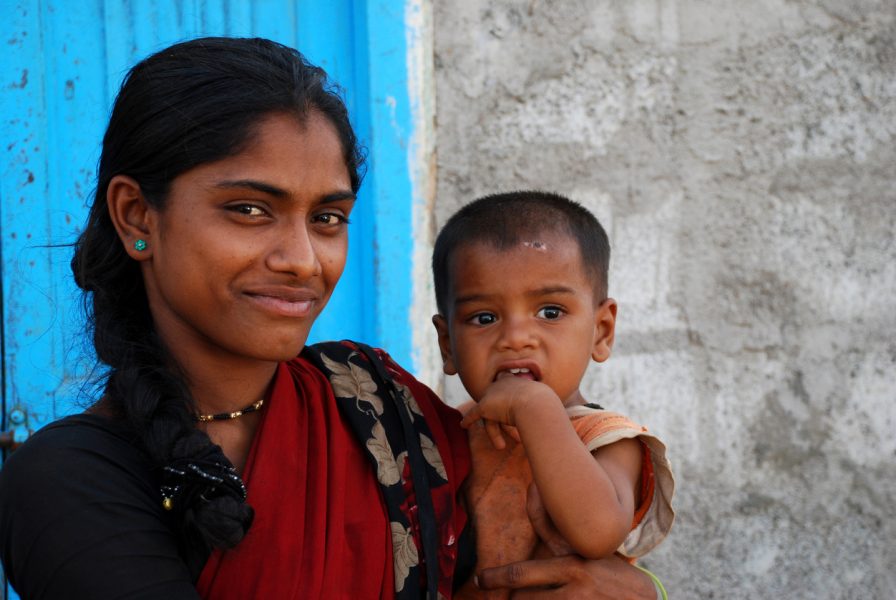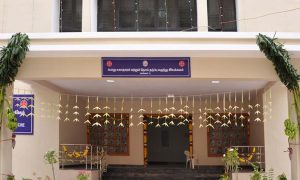
TN owes its leading medical infra to a 100-year-old public health body
The Directorate of Public Health and Preventive Medicine, which is celebrating its centenary of formation this month, has been particularly focussed on children and women's health

When 17-year-old footballer Priya died in a government hospital in Tamil Nadu on November 15, 2022, following the amputation of her leg, the MK Stalin government was at the receiving end from a large section of society.
A day later, while explaining what went wrong, and how, to a Tamil television channel, Dr Amalorpavanathan Joseph, member, Tamil Nadu State Planning Commission, said the death was the result of the failure of men and not the “process”. He emphasised that the main reason for the death of the girl was that the medical personnel ‘forgot’ to “remove the tourniquet”.

“Starting from a patient brought into the operation theatre till the patient is taken to the ward, a clear-cut process has been laid out. If one finds out anything amiss at any stage of the process, deaths could be easily avoided. In this case, the non-removal of the tourniquet even after the completion of the surgery and even after she was brought to the ward led her to death,” he said, adding that when a process is followed, human errors come down.
The Federal Premium: A PHC in a remote Kerala village shows where there is a will, there is well-being
While failures happen while implementing a process, the process per se would not be a failure, said experts. Just a couple of days after Priya’s death, a woman suffering from Guillain-Barre syndrome, a rare disease, was successfully treated by another government hospital, and this went largely unnoticed.
For most part of its history, Tamil Nadu has been at the forefront in terms of several medical parameters, from having a low maternal mortality rate to becoming a polio-free state. The reason for its success is in having a proper system in place and a well-defined process in taking medical services and care to its people. Working silently to improve Tamil Nadu’s healthcare infrastructure is the state Directorate of Public Health and Preventive Medicine (DPHPM), which is celebrating its centenary of formation this month.
Public health and the British
India is not just a land of snakes; it’s also the land of a wide spectrum of vaidyas, hakims, healers, and so on. After the entry of the British, allopathy medicine started to gain importance. India’s first modern hospital was started in the then Madras Presidency in 1664 and that was the Madras General Hospital, which is now known as the Rajiv Gandhi Government General Hospital.
Between 1800 and 1820, four more hospitals were established in Madras. This may give the impression that the British took Indians’ healthcare seriously. However, according to K Sujatha Rao, former Union secretary of the health ministry, “health was not a priority for the British”.
Also read: Govt has no option but to increase share of public health expenditure
“During the period from 1889 to 1894, they barely spent 0.15 per cent of their revenues on health compared to the 4 per cent spent on education. Unacceptably high death rates of over 69 per 1,000 and the debilitating impact of malaria, cholera, typhoid, and venereal diseases on the troops did, however, stir them into intervening in the area of public health,” Rao writes in her book titled Do We Care? India’s Health System.
In order to improve public health, sanitary commissioners were appointed in Madras, Bombay and Calcutta between 1864 and 1869. Following that, various Acts related to public health and preventive measures were passed, such as the Village Sanitation Act, 1889. In 1914, sanitary commissioner posts were merged with the post of director general (DG) of the Indian Medical Service that reduced the importance for public health.
In the same year, the Madras Medical Registration Act was passed to organise the medical profession. The Act basically sought to make people understand how to differentiate quacks from qualified western medicinal practitioners. Under this Act, the Madras Medical Council was established. This could have been a base for the British to form the Indian Medical Council much later.
Justice Party’s treatment
In the British regime, the elite, the urban and the dominant castes across India enjoyed the privilege of better health services, as they did education. In Madras, this started to change when the South Indian Liberal Federation, a ‘non-Brahmin movement’, entered into the political scene as the Justice Party.
The Justice Party fought the first legislative council election in 1921 on two major promises: employment opportunities for non-Brahmins in government establishments, and health and educational services for all.
Also read: Coronavirus should force India to shore up rickety public health system
The very next year, the Sanitation and Public Health subject came under the control of the Local Self-Government Department, which gave birth to the DPHPM. In 1924, besides opening a School of Indian Medicine “to explore the possibilities of placing the indigenous system of medicine on a scientific footing”, the Justice Party introduced a scheme to attract medical professionals to serve the rural population, according to a paper titled ‘Professionalising Medical Practice in Colonial South India’ by VR Muraleedharan, a healthcare researcher.
“The year 1924 saw an important change in the history of healthcare in the Madras Presidency. For the first time, a scheme specifically designed to deliver healthcare to the rural people was introduced. This does not mean that prior to 1924 there were no dispensaries or hospitals in rural areas. The basic objective of this new scheme, called the Subsidised Rural Medical Relief Scheme (SRMRS), was twofold — to bring medical relief within easy reach of the rural population, and at the same time to encourage the private practitioners to settle down in rural areas. It was an attempt to attract private medical practitioners to rural areas by giving them monetary incentives instead of appointing permanent government medical officers,” wrote Muraleedharan.
A merger that wasn’t
The Bhore Committee, headed by Joseph Bhore, a Madras cadre ICS officer appointed in 1943 to study the state of health in the country, submitted its report in 1946, with a recommendation to merge the medical services and public health departments.
“This meant amalgamating medical treatment for acute care for sick patients along with public health that essentially deals with population or community health such as infectious diseases. Both Madras and Bombay presidencies dissented to this — Madras felt that the coordination between medical and public health was already good and, therefore, saw no reason for the merger. Tamil Nadu’s (Madras) high performance across all public health indicators is largely attributed to this fortuitous decision,” said Sujatha Rao.
In order to strengthen the public health foundation even more, a separate Public Health Act was passed in 1939 by the Madras Presidency. It was the first province in the country to pass such an Act. While the Indian Medical Council was formed in 1933 to establish a uniform minimum standard of higher qualifications in medicine for all provinces, the Public Health Act required public health professionals to secure a public health qualification in addition to their medical degree.
A dedicated public health cadre
Because of these initiatives, Tamil Nadu is the only state in the country today to have a dedicated public health cadre, who are appointed through the Tamil Nadu Public Service Commission or by transfer of service from primary health centres with five years of service and after acquiring public health qualification like Diploma in Public Health or MD in Community Medicine, etc, within four years of their appointment. They are usually non-practising public health cadres. The cadre also includes entomologists and statisticians.
“The Tamil Nadu Public Health Act needs updating, but it still provides the legislative basis for the planning and implementation work of the Directorate of Public Health,” say authors Monica Das Gupta et al., in their paper ‘How Might India’s Public Health Systems Be Strengthened? Lessons from Tamil Nadu’, published in 2010.
“For example, the annual district plans for responding to public health threats posed by floods are drawn up under the legislative authority of the Public Health Act. This is in sharp contrast with most other states, which lack such an Act. For example, in Karnataka, the old colonial-era Public Health Acts for the different parts of the state have not yet been consolidated into an Act applicable across the state, and are in disuse,” say the authors.
Budgeting decisions
Today, the state health department has three key directorates namely — DPHPM, Directorate of Medical Services (DMS) and Directorate of Medical Education (DME). However, the latter two were born out of the former, following a continuous process of integration and separation which had its own advantages and disadvantages.
When Monica Das Gupta et al. wrote the paper in 2010, the share of state spending on DPHPM was 38.8 per cent, DMS 23.1 per cent and DME was 38.1 per cent, as per the 2008-09 fiscal allocations. A decade down the line, the DME has got a greater share with 52 per cent, DPHPM 34 per cent and DMS 14 per cent, based on 2022-23 budget allocations. The DME getting a greater share is understandable, given the state’s aim to build one medical college in every district.
Focus on women and children
Despite more allocation in the educational front, the state puts children and women’s health first and has entrusted the job with DPHPM. Both the main Dravidian parties — DMK and AIADMK — have introduced various populist schemes, particularly in public health. For women, the directorate has well-established schemes like Dr Muthulakshmi Reddy Maternity Benefit Scheme that includes cash and nutrition kits, and best practices like bangle ceremony.
Also read: Why Delhi nurses are protesting, what this says of capital’s healthcare
For children, the directorate is implementing various school health services like rheumatic heart diseases program (introduced in 1996), congenital defects programme (2004-05), school children heart diseases programme (2008), free spectacles distribution for refractive errors (2009), comprehensive school dental programme (2011-2012), menstrual hygiene programme (2012), weekly iron folic acid supplementation (2011-12) and adolescent immunisation.
Besides, the state government has made interventions even in central schemes like Rashtriya Bal Swasthya Karyakram (RBSK) by providing school health card, availing state health insurance scheme, integration with voluntary organisations to treat clubfoot, cleft lip and muscular dystrophy, and screening the children below the age of 18, by integrating RBSK with leprosy and tuberculosis programme.
With such a rich history and clearly charted out activities, the DPHPM continues to march, onwards and upwards.


